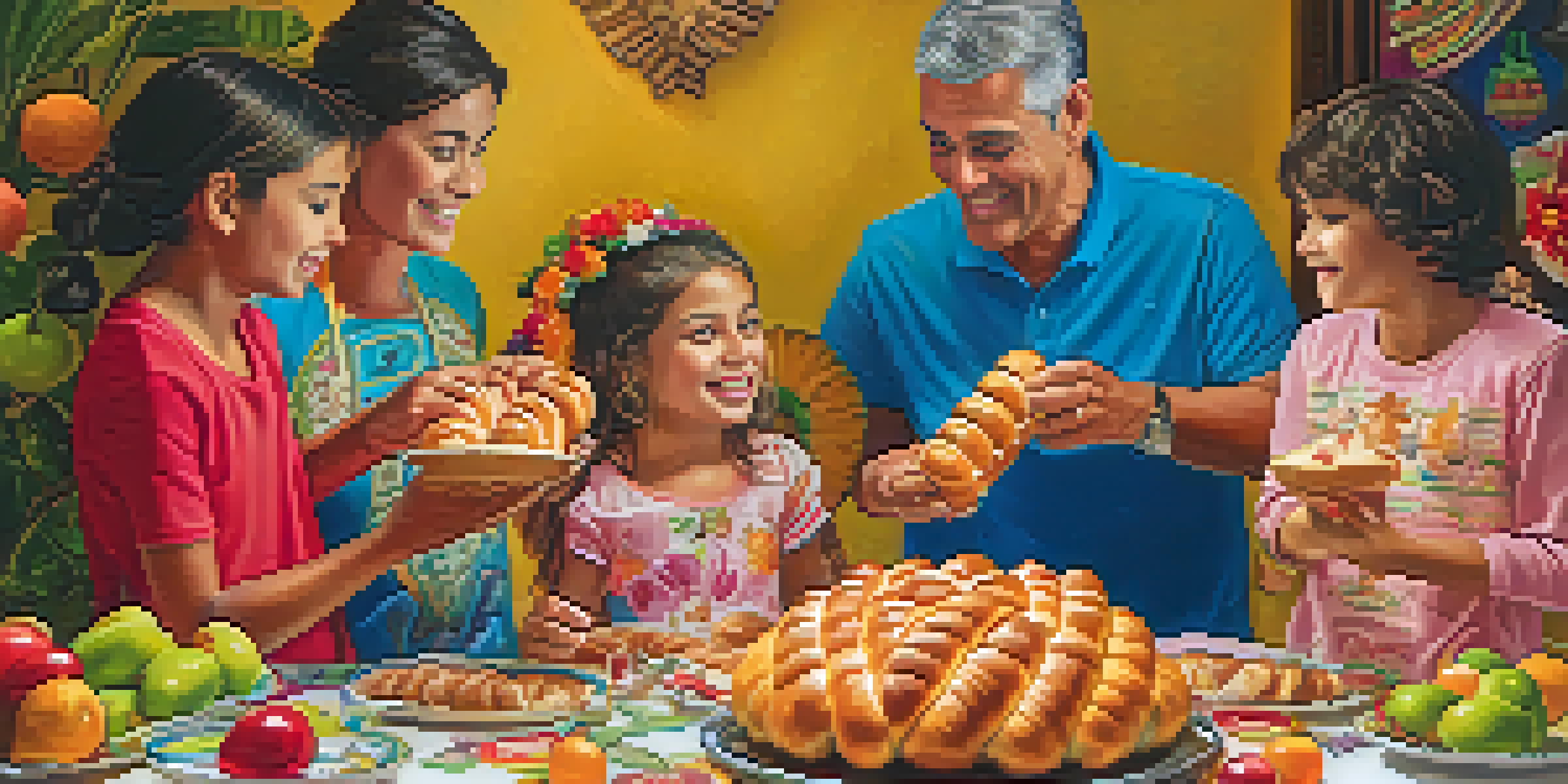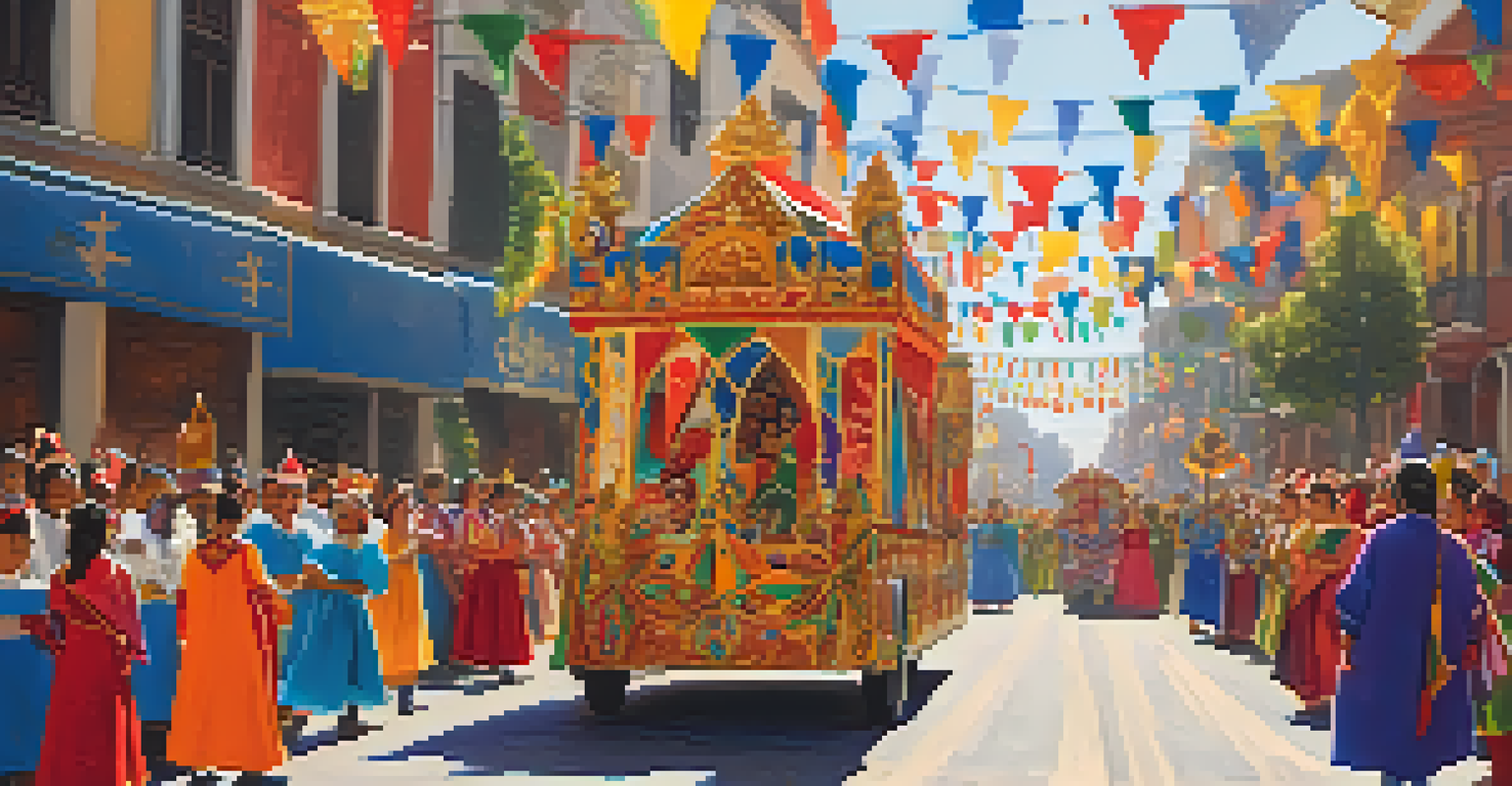Día de los Reyes: Celebrating Epiphany in Spanish Tradition

What is Día de los Reyes and Its Significance?
Día de los Reyes, or Three Kings' Day, is celebrated on January 6th, marking the arrival of the Magi to see baby Jesus. This day holds immense significance in Spanish-speaking countries, symbolizing the revelation of Christ to the Gentiles. It is a vibrant celebration filled with joy, family gatherings, and rich cultural traditions.
The spirit of the holiday is not just in the gifts we exchange, but in the moments we share with our loved ones.
For many, this day is the grand finale of the Christmas season, ending the festive period with a bang. The significance of the Magi, who brought gifts of gold, frankincense, and myrrh, is reflected in the way gifts are exchanged on this day. Children eagerly await the arrival of the Three Kings, and the excitement builds as families prepare for the celebrations.
Día de los Reyes is not just a day for gifts; it’s a time for reflection on the values of generosity and sharing. It invites families to come together, reinforcing the importance of community and togetherness during this special time.
Traditions and Customs Associated with the Day
One of the most cherished traditions during Día de los Reyes is the 'Rosca de Reyes,' a sweet bread shaped like a crown. This delicious pastry is often filled with fruit and topped with colorful decorations, symbolizing the jewels of a crown. Families gather to share this treat, and hidden inside are small figurines representing baby Jesus.

Finding the figurine in your slice of rosca comes with its own set of customs; the person who discovers it is expected to host a party on Candlemas Day, celebrated on February 2nd. This tradition adds an element of fun and surprise to the celebration, keeping the spirit of giving alive long after the holiday.
Día de los Reyes: A Cultural Celebration
Día de los Reyes is a vibrant holiday that marks the arrival of the Magi, emphasizing family, community, and the spirit of generosity.
Another engaging custom is the parade held in many cities, featuring colorful floats, music, and performers dressed as the Three Kings. These parades create a festive atmosphere, bringing communities together and allowing everyone to partake in the joyous celebration.
The Role of Music and Dance in the Celebration
Music and dance play a vital role in Día de los Reyes festivities, adding vibrancy to the celebrations. Traditional songs, known as 'villancicos,' are sung, recounting the story of the Magi and their journey. These lively tunes often invite everyone to join in, creating a sense of unity and joy.
Tradition is not the worship of ashes, but the preservation of fire.
In addition to singing, traditional dances are performed, showcasing the rich cultural heritage of Spanish-speaking countries. These dances often involve intricate footwork and colorful costumes, captivating onlookers and participants alike. Music becomes a universal language that binds people together during this special occasion.
The rhythm of the music and the energy of the dance transform public spaces into lively gatherings, where families and friends celebrate together. This blend of music and dance not only entertains but also deepens the cultural roots of the holiday.
Gifts and Their Meaning on Día de los Reyes
Gift-giving on Día de los Reyes is a cherished custom, emphasizing the spirit of generosity that the Magi embodied. Children write letters to the Three Kings, expressing their wishes and hopes, much like they do for Santa Claus. This practice creates excitement, as families prepare for the morning when gifts are exchanged.
Unlike Christmas, where gifts may be more personal, those given on Día de los Reyes often reflect a communal spirit, focusing on shared joy and happiness. It’s common for families to gather and exchange gifts, reinforcing the bonds of love and affection among relatives and friends.
Traditions that Unite Families
Customs such as sharing 'Rosca de Reyes' and joyful parades create a sense of togetherness and highlight the importance of community during the celebration.
The act of giving gifts resonates deeply with the underlying message of the holiday: the importance of sharing blessings and joy with others. It serves as a reminder of the Magi’s gifts to Jesus and encourages families to extend that spirit of generosity to their communities.
Culinary Delights of the Día de los Reyes
Food is an integral part of the Día de los Reyes celebration, with a variety of traditional dishes that vary by region. From the sweet 'Rosca de Reyes' to savory tamales, each dish tells a story and adds flavor to the festivities. Families often prepare these meals together, adding a personal touch to their celebrations.
In addition to the rosca, many families enjoy hot chocolate, a popular beverage that pairs perfectly with the sweet bread. This delightful combination warms hearts and homes, fostering a sense of togetherness. Sharing meals becomes a focal point, where stories are shared and laughter fills the air.
These culinary traditions are more than just food; they represent a cultural heritage passed down through generations. Each bite connects families to their roots, creating lasting memories and traditions that are cherished year after year.
Día de los Reyes Around the World
While Día de los Reyes is predominantly celebrated in Spanish-speaking countries, its influence has spread globally. In the United States, particularly in areas with large Latino communities, the celebration is embraced with equal enthusiasm. Schools and community centers often host events, highlighting the culture and significance of the day.
In places like Puerto Rico and Mexico, the festivities can last for several days, filled with parades, concerts, and community activities. These celebrations create a vibrant atmosphere, showcasing the rich traditions that define each region. The sense of community is palpable, as everyone comes together to celebrate.
Modern Adaptations of a Classic Holiday
While retaining its traditional roots, Día de los Reyes has adapted to modern influences, allowing families to celebrate through social media and virtual gatherings.
This global embrace of Día de los Reyes not only honors tradition but also fosters cultural exchange. It encourages understanding and appreciation of diverse customs, making it a beautiful representation of unity in diversity.
The Modern-Day Celebration of Día de los Reyes
In today's fast-paced world, Día de los Reyes continues to hold its charm while evolving with modern influences. Social media has become a platform for sharing celebrations, allowing families to connect and share their traditions with friends far and wide. This digital age helps keep the spirit of the holiday alive, even when families are separated by distance.
Many contemporary families blend traditional practices with modern elements, creating new memories while honoring the past. For instance, some families might incorporate online gift exchanges or virtual gatherings, allowing everyone to celebrate together, regardless of their location.

This adaptability shows how traditions can thrive in a changing world. By embracing both the old and the new, families continue to pass down the joy and significance of Día de los Reyes to future generations, ensuring that the spirit of the celebration remains alive.